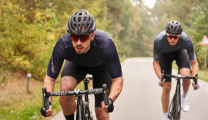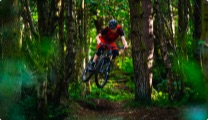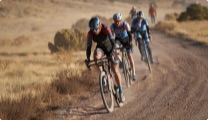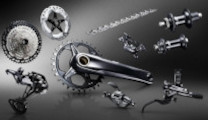Düsseldorf sits on the banks of the Rhine River, making it an easily navigable city for cyclists. But what is the best way to enjoy Germany’s Garden City? We’re meeting with local BMX pro Adrian Warnken as he shows us around in this episode of Cycling in the City: Düsseldorf.
Düsseldorf is a city that has grown and evolved for hundreds of years. Its beautiful old town remains vibrant, while its modern architecture and industrial spaces emanate economic importance. To the east of the river, you will find the Altstadt, the Old Town, where history literally vibrates through cobbled streets and time-worn buildings, including the towering St. Lambertus Church, the Burgplatz Square and Heinrich Heine’s birthplace. The city’s heart lies to the west of the river with modern, bustling shopping streets, most famously Konigsallee.
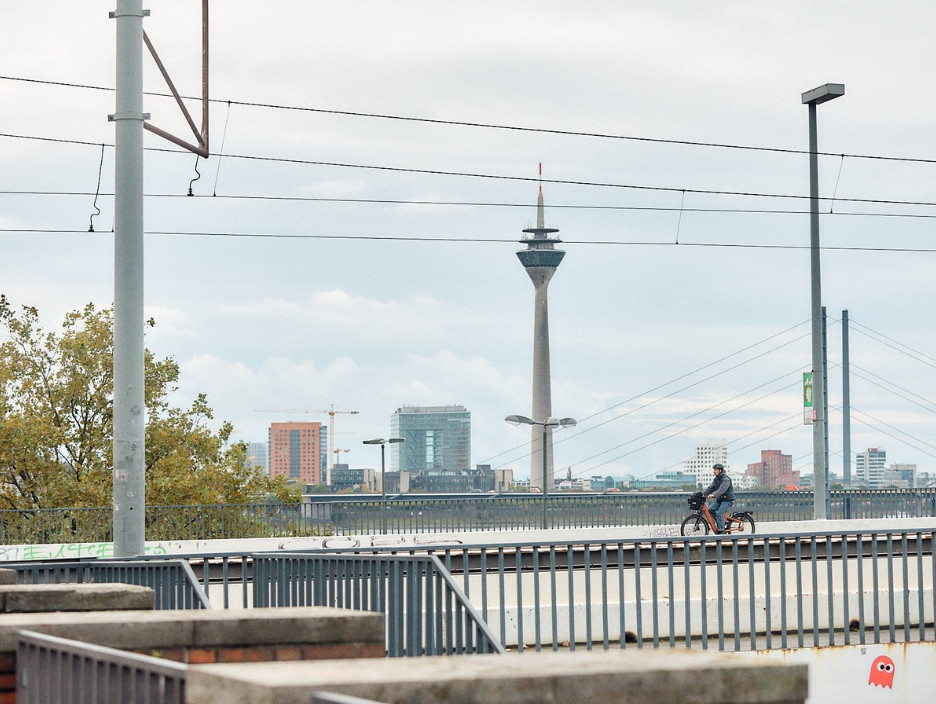
The MedienHafen, Media Harbour, is located toward the southwest, boasting a spectacular range of state-of-the-art architecture, making it amongst the most contemporary industrial areas in Düsseldorf. The city is filled with green spaces, with about one-third of its area dedicated to parks. Hofgarten, located just north of the Altstadt, is the oldest and largest, with tree-lined paths, sculpted gardens, ponds, and wildlife offering a calming respite from the city’s urban energy.
With a relatively flat landscape, scenic riverside paths and short distances between sights, exploring Düsseldorf by bike makes perfect sense. The city has a bike-sharing system to help tourists and locals explore the city on two wheels. Nextbike, powered by Tier, has more than 700 bikes that can be hired via an app, providing a convenient and accessible way for everyone to try cycling in Düsseldorf.
Our guide to the city is Adrian Warnken. A professional BMX rider for whom the urban landscape is a playground he knows intimately. “I ride 45 minutes through town to work and back every day. I live in the very north of Düsseldorf, near the airport, which is just outside the city, but I can be in the center in 15 minutes. In a few minutes, I can reach the river.”
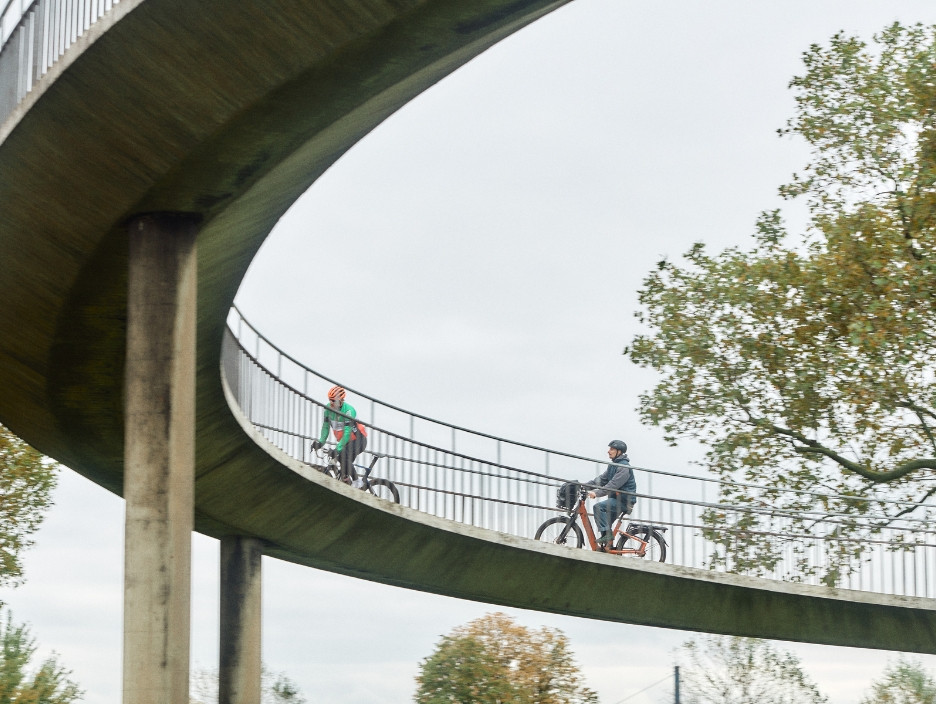
Even for a stranger, finding your way around Düsseldorf is easy as the Rhine creates a central route. “It’s super easy to navigate the city by bike. There are 5 bridges so you can cross easily to the other side of the river,” Adrian says.
As we head off for a city ride, Adrian shows all the skills you would expect from a BMXer. Even riding an e-bike, he confidently tackles junctions and leads us through the first few sections of the cycle path, “I was always the guy with a car, but the traffic in Düsseldorf is annoying. As kids, we were always on our bikes, and now it is the most efficient way to get around the city. I can’t think of a good reason why I should drive a car here.”
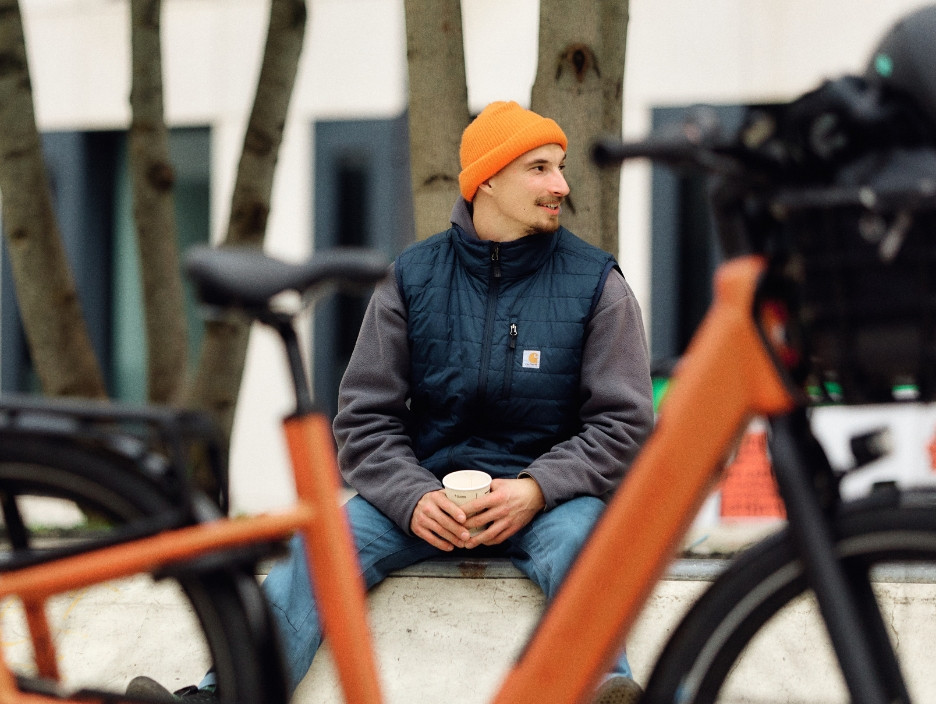
As we ride, Adrian gives us a quick explanation of the city's layout: “There are parallel roads that run to the path to the river. The city is quite efficiently organized, but it could still be much better for cyclists. I feel that I am confident and comfortable on a bike. I have practically lived on a bike and ridden BMX for 20 years, but not everyone is as confident as me. My friends said they would ride more if there were more bike lanes. That used to be true, but now the city is turning car lanes into bike lanes.”
As if to prove his point, we cruise down a virtually empty, wide cycle path with only a handful of riders on it. Adrian comments: “The city provides a bike lane by taking it from the cars. It makes it harder for cars and even more congested. This should encourage even more drivers to cycle – they can see me cruising with no problem!” Unfortunately, car drivers still struggle to give up their vehicles, “when drivers are stuck in traffic, they look at you as if angry. It is not my fault you are trapped in a car!” he laughs.
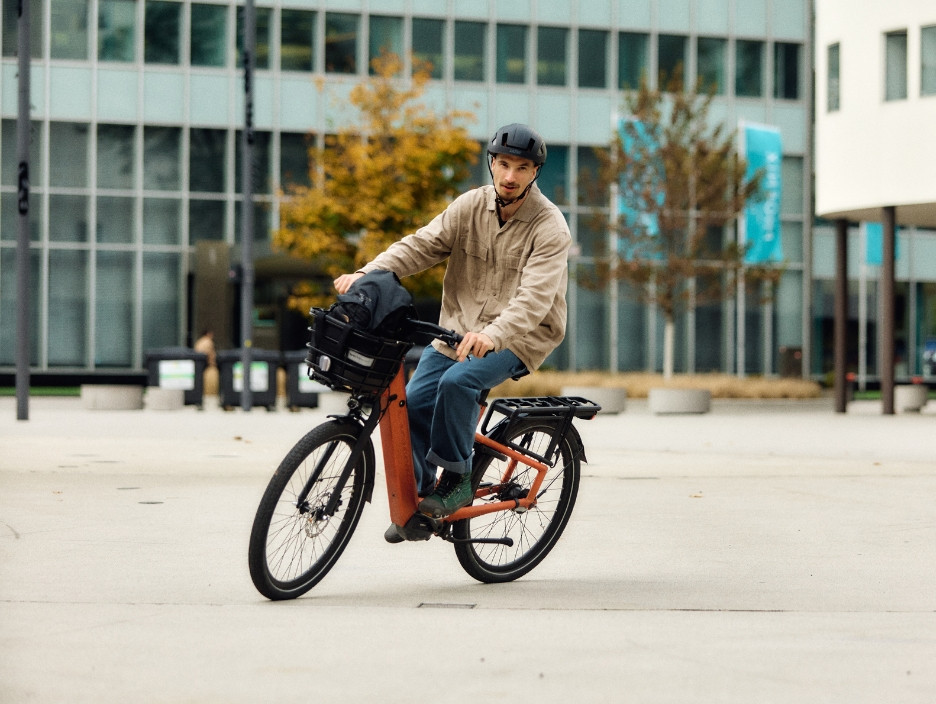
In Düsseldorf, e-bikes come into their own because of the wind. “Yesterday was so windy! It took me nearly an hour to get to work. It was exhausting,” Adrian tells us, making us all grateful to be on e-bikes today. The Rhine cutting through the city's center leaves significant gaps between buildings for the wind to whistle through, “it can be very windy. My friends who are architects say some new building designs in the city have unintentionally created something like a wind tunnel.”
Adrian works at Skate Park Eller. “Skate Park Eller is one of Germany’s biggest skate parks – it is all about social work, helping kids, and riding. Some people in BMX think we are not that cool, but the kids and parents love what we do! It is really fun to see other kids develop the way I did.”
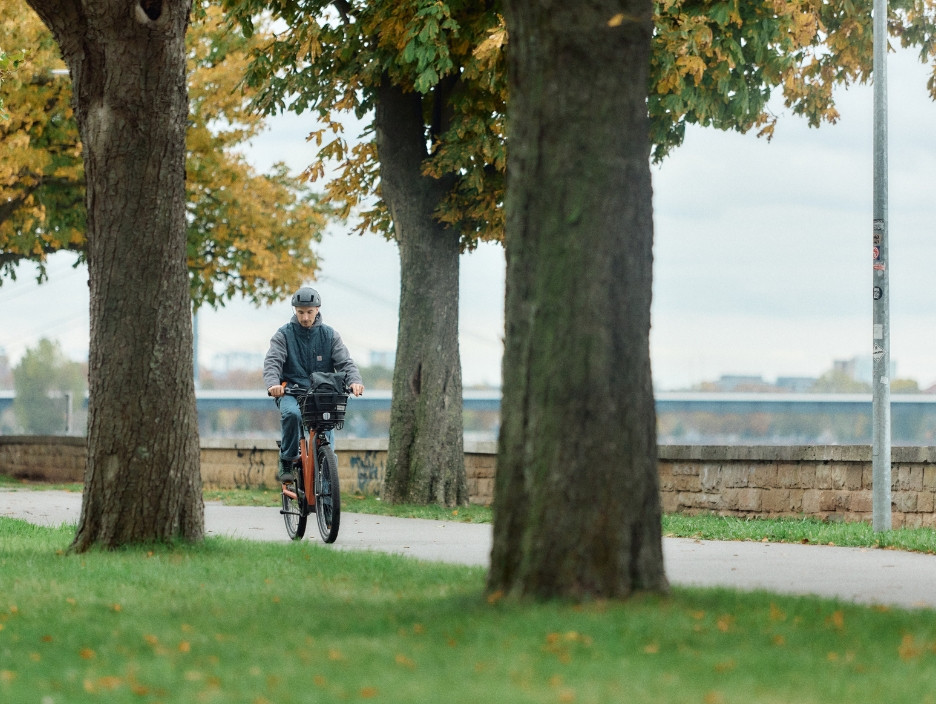
Just a few miles from the city center, the countryside surrounding Düsseldorf opens up. Cyclists can lose themselves in the serenity of the Rhine’s verdant floodplains or the picturesque Grafenberg forest. An array of well-signposted cycling paths reaches into the distance, balancing perfectly with the metropolitan heart of Düsseldorf. Along the river are road cyclists, families with smaller children, and older people on city bikes.
Adrian reflects on the nature of community in cycling, “I just wish for more people to enjoy riding,” Adrian says. We couldn’t agree more.
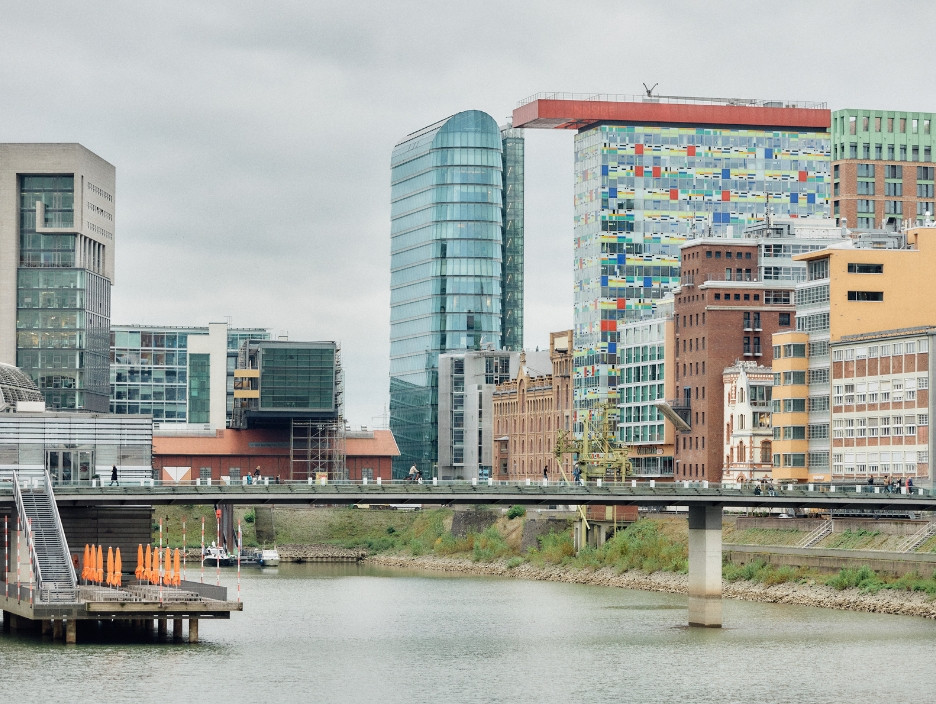
Share this article
